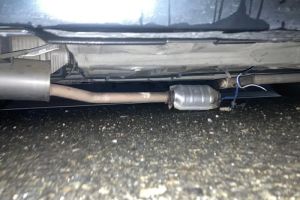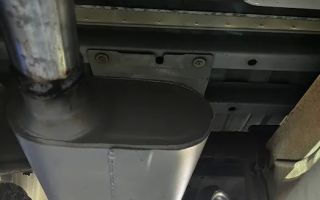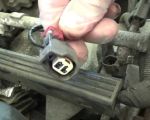- #Preparing-Your-Vehicle-for-Dirt-Roads – Preparing your vehicle for dirt roads
- #Driving-Safety-Tips-For-Dirt-Roads – Key driving safety tips on dirt roads
- #How-to-Handle-Difficult-Terrain – Handling difficult terrain on dirt roads
- #What-to-Do-In-Case-of-An-Accident – Steps to take if an accident occurs on dirt roads
1. Preparing Your Vehicle for Dirt Roads
Before embarking on a trip through dirt roads, it’s important to prepare your vehicle properly. Dirt roads can be unpredictable, with loose gravel, potholes, and varying terrain that can affect your car’s performance. Here’s how to ensure your vehicle is ready:
- Check Tire Pressure: Tires should be properly inflated to ensure maximum traction. Too low or too high pressure can lead to instability on uneven ground.
- Inspect Your Suspension: Ensure your car’s suspension system is in good shape, as it absorbs shocks when navigating rough terrain.
- Ensure Adequate Ground Clearance: If you drive a car with low ground clearance, consider using a higher-clearance vehicle or SUV for dirt roads. This reduces the chances of scraping the undercarriage.
- Check Fluid Levels: Ensure your oil, coolant, and brake fluids are at proper levels. Dirt roads can put extra strain on your engine and brake systems.
One real-life example comes from a family vacationing in rural Colorado. Before heading into the mountains on a dirt road, they made sure their SUV was fully serviced, including checking tire pressure and suspension. This helped them avoid any mechanical issues during their trip.

California Roadside Service
1426 S Allec St, Anaheim, CA 92805, USA
2. Driving Safety Tips on Dirt Roads
Driving on dirt roads requires different skills compared to smooth paved roads. Here are some key tips to help you navigate safely:
- Reduce Speed: When driving on dirt roads, it’s important to reduce your speed. Slower speeds allow for better control, especially when the road is uneven or loose.
- Maintain a Safe Distance: Keep a safe distance from other vehicles, as dust and loose gravel can reduce visibility. This will give you more time to react if something unexpected happens.
- Avoid Sudden Movements: Sudden steering, braking, or acceleration can cause your vehicle to lose traction. Make gentle, deliberate movements to maintain control.
- Watch for Hazards: Dirt roads are often unpredictable, with obstacles like rocks, potholes, and even wildlife. Stay alert and scan the road ahead for potential hazards.
One incident shared by a traveler in Wyoming illustrates this. Driving on a remote dirt road, they suddenly hit a patch of loose gravel. By keeping their speed low and maintaining a firm grip on the wheel, they were able to regain control and avoid an accident.

AJ's Auto Glass & Detailing
4404 S 84th St, Omaha, NE 68127, USA
3. How to Handle Difficult Terrain on Dirt Roads
In some situations, dirt roads can present more than just loose gravel or small rocks. You may encounter steep inclines, deep ruts, or even mud. Here’s how to handle more difficult terrain:
- Climbing Steep Hills: When going uphill on a dirt road, use lower gears to provide more torque. Keep your momentum steady and avoid sudden acceleration.
- Descending Hills: When going downhill, use engine braking by shifting to a lower gear to avoid overheating your brakes. This helps maintain control.
- Dealing with Mud: If the road is muddy, avoid spinning your tires. Instead, try to drive with a steady, controlled speed. If you get stuck, rocking the vehicle back and forth may help get you out.
- Handling Deep Ruts: If you encounter deep ruts, try to drive along the edge of the ruts where the terrain is more level. If necessary, reduce your speed and approach them slowly to avoid getting stuck.
A real-life example of this occurred during a road trip in Northern California. A group of friends encountered a steep, muddy hill while driving on a dirt road. By carefully adjusting their speed and using low gears, they made it to the top without slipping or getting stuck.
4. What to Do in Case of an Accident on Dirt Roads
If you are involved in an accident or your vehicle becomes stuck on a dirt road, here’s what to do:
- Ensure Safety First: Make sure all passengers are safe. Turn on hazard lights to alert other drivers, especially on narrow dirt roads where visibility can be low.
- Assess the Situation: If your car is stuck, try to assess whether it’s safe to attempt self-recovery. Avoid doing anything that could put you or your passengers at risk.
- Call for Help: If you can’t resolve the issue yourself, contact a tow service. If you’re in a remote area, ensure your phone has a signal or use any available satellite communication to request help.
- Stay Calm: If an accident occurs, staying calm is crucial. Contact emergency services immediately if anyone is injured.
In one case, a couple vacationing in Arizona had their vehicle stuck in a muddy patch on a dirt road. They called a local towing service, and with the help of a professional, their vehicle was safely removed. The incident also led them to be more cautious on future dirt road trips.
Driving on dirt roads can be an exciting and rewarding experience, but it requires extra caution and preparation. By following these tips, you can ensure that your journey is safe and enjoyable. If you ever find yourself in need of assistance on a dirt road, don’t hesitate to contact Rescue & Towing for expert help and towing services.




























